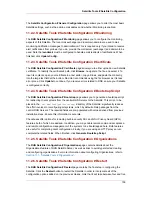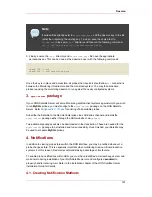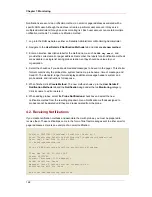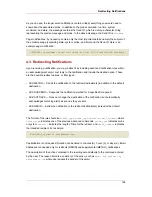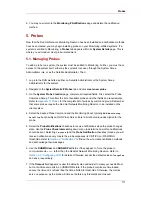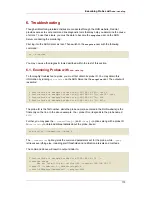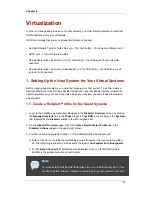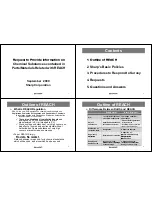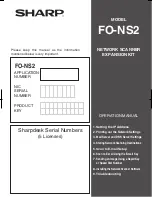
Monitoring
The Red Hat Network Monitoring entitlement allows you to perform a whole host of actions
designed to keep your systems running properly and efficiently. With it, you can keep close
watch on system resources, network services, databases, and both standard and custom
applications.
Monitoring provides both real-time and historical state-change information, as well as specific
metric data. You are not only notified of failures immediately and warned of performance
degradation before it becomes critical, but you are also given the information necessary to
conduct capacity planning and event correlation. For instance, the results of a probe recording
CPU usage across systems would prove invaluable in balancing loads on those systems.
Monitoring entails establishing notification methods, installing probes on systems, regularly
reviewing the status of all probes, and generating reports displaying historical data for a system
or service. This chapter seeks to identify common tasks associated with the Monitoring
entitlement. Remember, virtually all changes affecting your Monitoring infrastructure must be
finalized by updating your configuration, through the Scout Config Push page.
1. Prerequisites
Before attempting to implement RHN Monitoring within your infrastructure, ensure you have all
of the necessary tools in place. At a minimum, you need:
• Monitoring entitlements — These entitlements are required for all systems that are to be
monitored. Monitoring is supported only on Red Hat Enterprise Linux systems.
• RHN Satellite Server with Monitoring — Monitoring systems must be connected to a Satellite
with a base operating system of Red Hat Enterprise Linux AS 3 Update 5, Red Hat Enterprise
Linux AS 4, or later. Refer to the RHN Satellite Server Installation Guide within Help for
installation instructions. Contact a Red Hat sales representative to purchase Satellite.
• Monitoring Administrator — This role must be granted to users installing probes, creating
notification methods, or altering the monitoring infrastructure in any way. (Remember, the
Satellite Administrator automatically inherits the abilities of all other roles within an
organization and can therefore conduct these tasks.). Assign this role through the User
Details page for the user.
• Red Hat Network Monitoring Daemon — This daemon, along with the SSH key for the scout,
is required on systems that are monitored in order for the internal process monitors to be
executed. You may, however, be able to run these probes using the systems' existing SSH
daemon (
sshd
). Refer to
Section 2, “Red Hat Network Monitoring Daemon (
rhnmd
)”
for
installation instructions and a quick list of probes requiring this secure connection. Refer to
Appendix C, Probes
for the complete list of available probes.
2. Red Hat Network Monitoring Daemon (
rhnmd
)
Chapter 7.
163
Содержание NETWORK SATELLITE 5.1.0 - CHANNEL MANAGEMENT
Страница 1: ...Red Hat Network Satellite Reference Guide 5 1 0 5 1 ISBN Publication date ...
Страница 2: ...Red Hat Network Satellite ...
Страница 4: ...Red Hat Network Satellite ...
Страница 12: ...xii ...
Страница 22: ...8 ...
Страница 35: ...Figure 2 11 Available Package Updates Available Package Updates 21 ...
Страница 52: ...38 ...
Страница 74: ...Figure 5 15 Text Mode Welcome Screen Chapter 5 Red Hat Network Registration Client 60 ...
Страница 176: ...162 ...
Страница 202: ...188 ...
Страница 220: ...206 ...
Страница 286: ...Field Value Warning Maximum Users Table C 74 RHN Satellite Server Users settings Appendix C Probes 272 ...
Страница 300: ...Your Preferences 71 Index 286 ...











